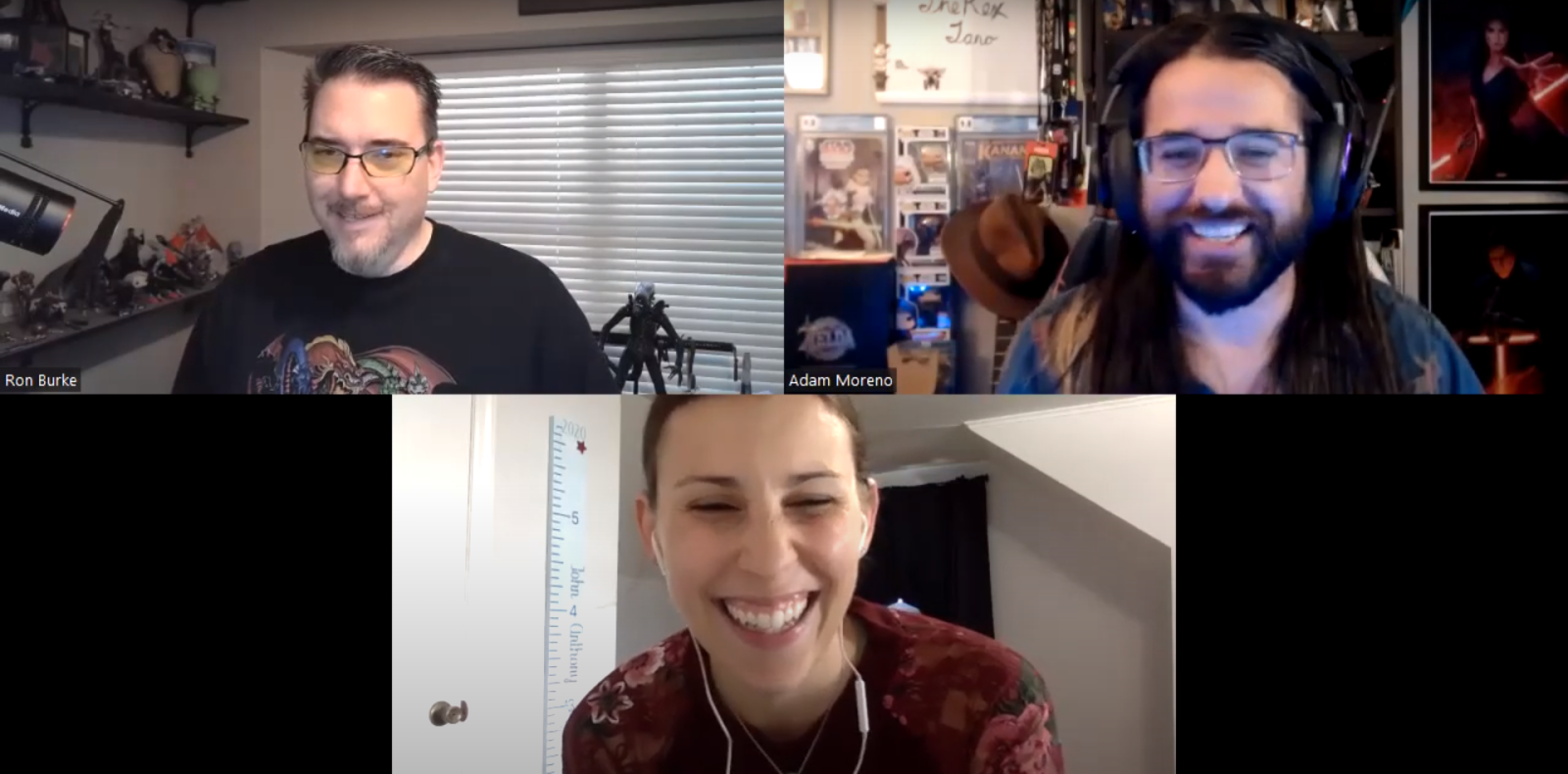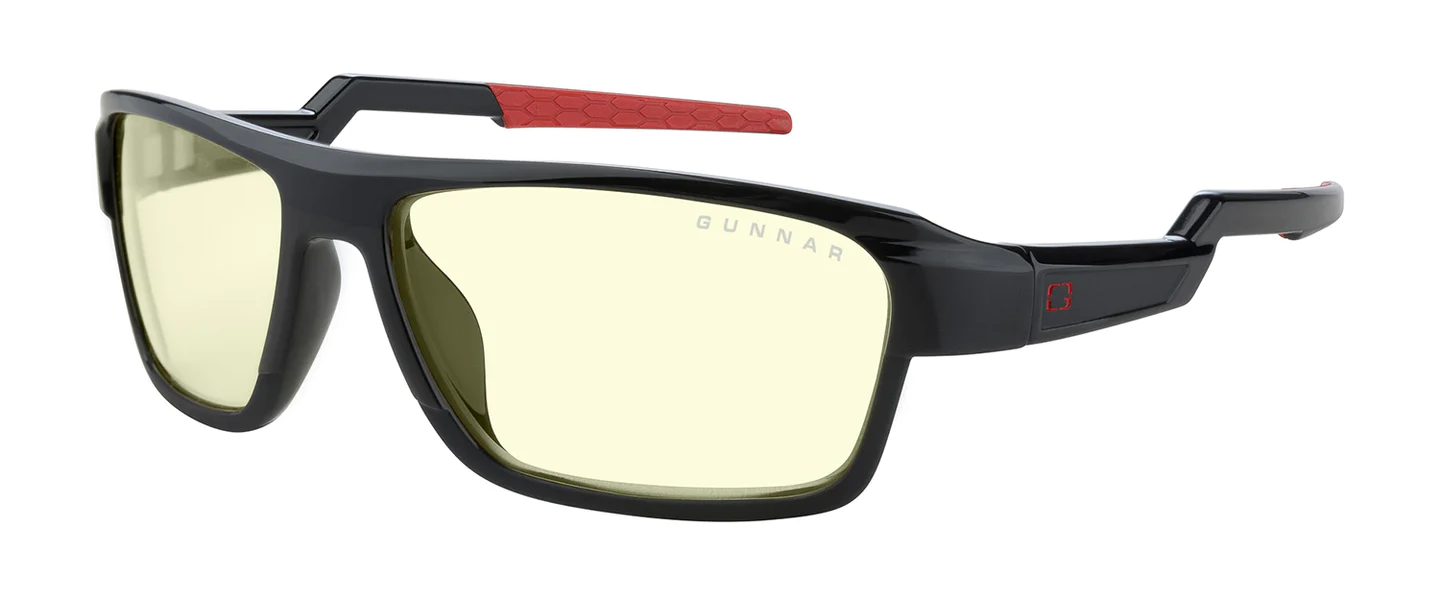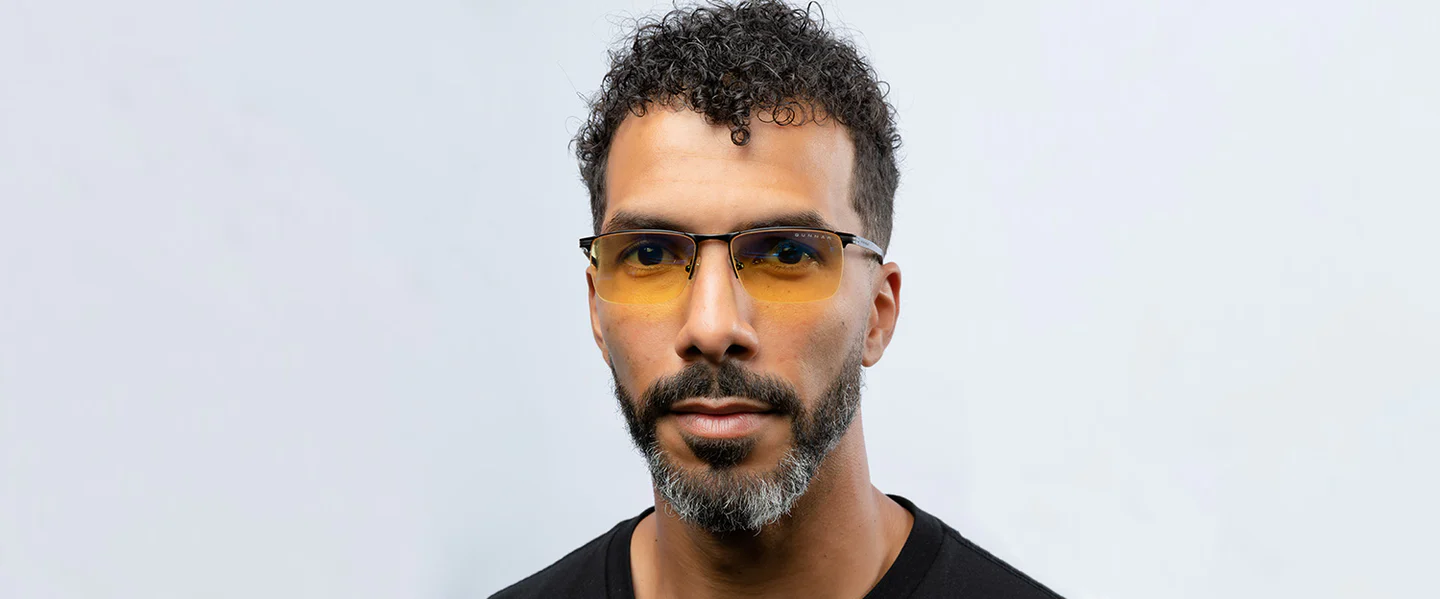
Gaming has a large audience by itself, but almost everyone has some sort of screen that they look at during their day. Ron Burke, Editor in Chief of GamingTrend and myself had the pleasure of talking with Dr. Miki Zilnicki about her work with Gunnar Optiks, her use of gaming in her job, and more! Check out this awesome and informative conversation!
Adam Moreno: Good morning and welcome to another we interview video here on gaming trend. My name is Adam Moreno and we’re joined by our editor in Chief for Gaming 10, Ron Burke. And today, our special guest is Dr. Miki Zilnicki. As we’ve come to call her Dr. Z. Dr. Zee is here to talk with us. GUNNAR glasses, which everyone here has some past experience with in one form or another, and we’re so excited to get some insight about GUNNAR and what they have going on and in their future. Welcome, Dr. Z. How are you?
Dr. Miki Zilnicki: Thank you so much for having me on. I am so excited. I am doing well, I am missing my GUNNAR glasses today because I am home and not in my office. But I see that both of you have yours on so I’m so excited to see that!
Adam Moreno: OK! Are you ready to get going?
Dr. Miki Zilnicki: I’m ready.
Adam Moreno: OK. So the first question we have is, what kind of made you decide to pursue this side of your career? Was there a pivotal moment in your career that made you want to focus on GUNNAR and their products and provide that to your patients? Because I know that you suggest those for a lot of your patients at this point.
Dr. Miki Zilnicki: So GUNNAR actually found me. So I am an optometrist by trade, but I am a specialized type of optometrist. I specialize in something called vision therapy and rehabilitation, so I look at the visual system a little differently and I am looking at the coordination of the two eyes, how the two eyes work together, how people see in depth, how they track and scan. So I really work with two very big types of demographics. I work with kids with reading issues, learning issues, eye turns, lazy eyes, as well as the post concussion, traumatic brain injury population. So in my practice we utilized some gaming and different types of things that you don’t normally see in your eye doctor’s office. So I had done an article about how gaming can really be integrated to improve people’s vision, and GUNNAR had found that article and we really started this relationship very early on just kind of talking about the difference in what I do and the difference of GUNNAR in the whole playing field of the optical space and it really was just like a natural relationship for the both of us because their mission is really all about education and health and keeping our eyes healthy while we’re on our devices. And it really aligns with what. I’m trying to do in my practice as well.
Adam Moreno: That’s phenomenal.

Ron Burke: First, I want to say thanks for taking the time. Doctor Z, I really appreciate it. So you mentioned TBI’s. I’m actually a military veteran and I got hit with an explosive and I had a TBI so I suffer from migraines on a fairly consistent basis and GUNNARs are really the only thing that I found that makes a difference. When I’m suffering from a migraine in tamping it down, especially, as Adam pointed out, I have kind of a Tony Stark level of ridiculousness with my setup here. So if I look like I’m looking off in the distance, it’s because I have screens over there. But you know, I’m staring at this much screen real estate. If I’m not wearing these glasses, I’m just bound for a headache. So I don’t know why. I’m hoping you can actually shed some insight into that. Why does this work?
Dr. Miki Zilnicki: Well, I think you know both migraines and post traumatic brain injury is complicated, right? It is often multifactorial. But I think why GUNNAR glasses work for you is because they’re not just single faceted. The patented lens design addresses all parts of digital eye strain, right? We are looking at not just that blue light or the glare. We’re addressing some low level. If there’s any dryness issues and also it helps with that focusing power. That we often over utilize while we’re looking at our devices for too long. So GUNNAR is really addressing all the pieces to the digital eye strain puzzle that may be the trigger for your migraines. So it’s really tamping everything down. You may have tried other blue light blocking glasses that are out on the market, but they’re just that, they’re just blocking the blue light and not addressing all the other pieces to that digital eye strain puzzle. And like I said, that’s likely what is the trigger for your what your migraine. So it really is helping all the pieces to that.
Ron Burke: And yeah, I had tried other glasses and they worked for a time, but, it wasn’t as bulletproof I should say, as the GUNNARs have been, you know, they’d work for one or two migraines, but migraines are all different, right? And I noticed that the GUNNARs work almost consistently so that definitely speaks a lot to that. Thank you for answering that for me.

Adam Moreno: That’s phenomenal. And it’s so glad to hear that, that is such a priority for GUNNAR, to make sure that the whole puzzle is being filled out, not just that one thing. The next question we have is actually from our podcast host Anthony. He uses GUNNAR for all of his time on screens, so he was very excited to throw this out there. He does a lot of his work on PC specifically, and he wanted to know what does GUNNAR do that turning down the brightness on your screen or using a blue light dampening technology that’s on a PC already. What does Gunner do that those things can’t do?
Dr. Miki Zilnicki: So again, it’s the same thing, right? The GUNNAR glasses really address more than just the blue light. So if you’re doing that on your PC, that’s great because we are already dampening out that blue light. But the lenses are doing that, plus all of those other things I think you know blue light has been such a buzzword. Right, especially since 2020 with COVID in everybody spending so much more time on their devices. It was kind. It was like the highest searched item was, “is blue light damaging to my eyes?” So GUNNAR has been around for over 20 years, which is crazy to think about that Joe Croft, our founder, had the forethought 20 years ago, like what are these devices going to do and when he patented the lens design he really, like I said, went back and said what are the issues that we’re experiencing on these devices? Let’s make a pair of glasses that address all of them. So to answer his question, it’s that these glasses do more than just block blue light. It really is getting to the root of all of the issues that can arise by being on our devices.
Adam Moreno: That’s awesome.
Ron Burke: I have a question, so you guys obviously have patents on the lenses and the technology. Is there anything in particular that doesn’t work? Like is there a lens shape that doesn’t work or or is all of it accomplished with different treatments to the glass? What’s the magic sauce if you will, that makes this work and have you run into something that didn’t work?
Dr. Miki Zilnicki: So all of the glasses that are available on the website have been designed specifically because it works. So the research is in the development phase right of does this or does this not work. This isn’t a technology that can just be put on any pair of glasses. It’s not just some coating that we could just add on that you know you go, you go to your local optometrist and there’s all these different options that you can add on. The GUNNAR, this isn’t something that can just be added on. This has to come from the gunner lab. This has to be in house with all of the, we have an AR coating that’s on the back, that helps to reduce that glare. We have that mirror coat on the front, which blocks that blue light. We have a very specific wrap. And tilt to our lenses to help with that dry eye. And we have that patented amount of focus in the lenses to help alleviate that strain. So like I said, this isn’t just like a bang sweep on coating. It really is the total design of the lens that can only really come from the GUNNAR House. So there’s not any specific shape or design that doesn’t work. It’s more so getting the lenses, the actual lenses from GUNNAR, that is the difference.
Adam Moreno: That’s awesome. A fun story, when I got my first job after college, I was dealing with a lot of that eye strain and at the time I was taking a break between contacts or glasses depending on the day. But I was given a pair of GUNNAR glasses by my parents as kind of like a good job getting your first job kind of thing. And I would actually use them regardless if I was wearing my contacts or my glasses. I would just put the glasses on top of the other glasses. And I think that that’s something that is really awesome is that you are now doing prescription GUNNAR glasses and I think that for people that don’t have the ability to wear contacts all the time, it’s so much nicer to be able to put on a pair of like prescription lenses that you can still see perfectly out, but you’re not putting on two pairs of glasses to to look like a real, real dork. People walk into your office and they’re like, “why are you wearing two pairs of glasses, right?”
Dr. Miki Zilnicki: Well, I think the key is that there’s two demographics, right? There are people that wear glasses and people that don’t. So the people that wear glasses really understand the quality of lenses and why these things are important. But for those that don’t need glasses, it’s a little bit hard for them to understand, right? There are those that are blessed that just wake up and they can see, right. They get their first job now they’re in front of a computer 40 hours a week, and then they’re having all these issues. The most important piece is for, even if you don’t need glasses for correction that, you get an eye exam because a lot of people are walking around with low level prescriptions that they’re able to function, but put them in front of a computer, and those things. Get exacerbated because we do run into at GUNNAR. right. That they buy this pair of glasses. And they’re like they put them on, and they hear all these wonderful things and they’re like, wait, this makes me feel uncomfortable. Why is that? And nine times out of 10, it’s because they have an underlying prescription that wasn’t addressed, that the glasses are… It’s like the wrong thing for them. So once we get to the root of that problem then we can order them the appropriate prescription glasses with the gunner design, and they’re much more comfortable, but it’s really important that, like I said, even if you don’t have a prescription that you still get your eyes, evaluated because it’s not. And I should also mention it’s not just refractive error, right? Are there any binocular vision issues? Are your two eyes working together? What is your focusing muscle that we’ve been talking about that these glasses help. What does that look like? What’s your level of ability with your focusing muscle? And lastly, do you have any dryness issues that need to be addressed while you’re on the. On our devices, because we know by research done time and time again when we’re on a device, we blink about 1/3 to 1/2 amount of time, if not even less than that when we’re on a device, right? We’re supposed to blink 15 to 20 times per minute, we’re seeing people on a device blinking maybe 3 to 4 times a minute. So and I was talking with Joe Croft yesterday and he was saying that they were at a gaming convention and there was a player that literally didn’t blink for three minutes like he was just so zoned in. Now and that has ocular health implications, right? There’s a reason why we blink so much. It’s to refresh your film to keep our eyes lubricated. We need to address any of those underlying issues. So it’s really important to make sure that we get our eyes examined so that we know where we’re at and then we can supplement with these great glasses to make viewing our device so much more comfortable.

Ron Burke: That’s where I’m at. I actually don’t wear prescription glasses. I had lasik. So when I got out of the military, I got hurt and my eyes were knocked. .5 off from each other, had LASIK to correct but dry eyes and all the other stuff that comes with it. I was still suffering a lot when I was staring at screens, so the GUNNARs really made a really big difference and that and the, like you said, the conscious effort, especially when I’m gaming to blink. It’s amazing how fast you forget.
Dr. Miki Zilnicki: No, it sounds so silly, but I tell people to actually pay attention to your blink rate. You wouldn’t be surprised, I and I say, if your eyes are starting to burn, that’s like the brain saying, like, please blink. You know, please refresh me. You know, like when your computer starts to glitch out and you need to refresh. It’s the same thing for your eyes. And the really cool thing about these glasses is, like I said, it addresses the dryness. It actually, the wrap of the lens increases the humidity around the eye which helps with the dryness, and GUNNAR actually offers a a very specific frame design. I believe the frame is called glacier and it actually has a little like panel that you can attach and reattach, but it creates like a chamber. And they’ve done some studies that with putting that pair of glasses on with that chamber, it can increase humidity around the eye up to 25% more than without. Which is a crazy thing. Just by putting on a pair of glasses, you’re creating an environment that’s more comfortable and better suited for reducing dry eye. So they’ve really thought of everything when it comes to digital use, which is amazing.
Ron Burke: So there is one other device that we’re seeing the rise of more recently, and I myself spent a lot of time in. That’s VR. Has GUNNAR and done any work with VR. It used to be when VR games first came out, they were almost a demo and you’re playing for 20 minutes. But now we’re having full experiences. You know, 40-50 hour experiences. So your eyeballs are stuck to a lens that’s this far away from your eye. So has GUNNAR done any work with that yet?
Dr. Miki Zilnicki: They have not done any work with it yet. I’m sure it’s down the pipeline because it really is becoming increasingly popular and not only from a gaming experience, but also from a therapeutic experience. I have a patient. Who was military post concussion. That’s actually working with Harvard with this new VR rehabilitative system that they got. It’s in beta phase, but he is expected to wear it at least 20 minutes a day. With all of these different therapeutic, cognitive, meditation, all different areas of therapy. So it’s not just gaming anymore. It really is going to be more in the medical community as well. So from a GUNNAR perspective, I’m sure it’s down the pipeline for them to get involved with it and just from my perspective, it’s really exciting because there’s a lot of benefits and there’s also things that we have to consider from a visual perspective as well.
Ron Burke: And you mentioned that it’s not just gaming that it’s now in the industrial space as well. Lockheed Martin, for instance, uses it. You know, there’s millions of miles of piping and wiring inside the F35, for instance, so they’ll use like an Oculus or a Vive, and they’ll put that on and you can see the virtual trace so you can go, “oh, it’s this panel that I need to open.” So it’s not just gamers. These are folks that, yesterday, had a normal job where they would just kind of look at a schematic. Today, they’ve now got a lens this close to their eyes, so that’s starting to change. We’re starting to see the rise of commercial space. So it’s good to hear that, GUNNAR, you know, has an interest in that. So hopefully we see something come of that.

Adam Moreno: And with your work you mentioned earlier that you use gaming in some of your eye therapy, this is a question that we asked all of our guests for our We Interview series. I’m really interested to hear your answer. It’s what is one memory in your time working in the gaming industry and for you it would be working with your clients. That will always stay with you as a happy memory.
Dr. Miki Zilnicki: So I have to, full disclosure, I am not a gamer at all, so please don’t out me. I am not a gamer at all, but in my office I will never forget I had this young gentleman come to me. He had an eye turn, his eye turned in, and he had gone to lots of doctors, and they all just said like, it is what it is. You don’t have 3D vision. That’s it. We put him in vision therapy and we have this big gaming console. A huge computer. That we work to build people’s depth perception up and the way that we see depth, our right eye sees an image, our left eye sees an image and then the brain puts it together and we create that depth so… For him one eye just wasn’t seeing the appropriate image right to overlay it, so there was no depth and we kept working with him, working with him, and I’ll never forget we put these glasses on him. The strobe glasses on the 3D Classes and I had the girl pop up on the screen and she looks like she’s a yoga instructor with hands like this and he looks at me. And he goes, “are her hands popping out?” And I said they are. And he was like, “you’ve been trying to tell me this for three months that there is depth to this and I can see it and that it’s going to happen and I see it. I see in 3D!” And he was able to, you know, move through the program, move through the game. And he was like. I thought that you were crazy. Because he was like, you’re the only doctor that told me I could do this, but it opened his world up that he could play this game now, right? But it translated to real life that he could then see depth in real life. So this computer gaming system gave him the opportunity because there are so many different things that we could get him to see. And then we worked from really gross 3D vision to really find 3D vision. So that, again, it translated over to real life that he could better gauge decks while he was driving that he could catch and throw a ball. And that is where gaming and where my world and gaming really cross over to change people’s lives. Because I sometimes think gaming gets a bad rap, right? Everyone’s like you’re gonna ruin your eyes by playing so much. So many games. But there is so much good. And that’s like one of my most favorite experiences because it was so stark. It clicked and it happened. It was like a hot moment for him. So it was so cool to see.
Adam Moreno: That’s so special. Well, Doctor Z, thank you so much for being our guest today. I’ve learned so much just from talking to you. And like I’m. So excited to see what the future holds for GUNNAR in all the different venues and having somebody so passionate about their product must mean a lot to them as well. So thank you so much for taking the time for GamingTrend and we appreciate you so much.
Dr. Miki Zilnicki: Guys, thank you so much for having me on. If anybody has any questions, please feel free to reach out to me. I will send you guys my contact info, but I really just want to end on the note. That GUNNAR really is different. That they are really working to provide the best product out there to protect and to make gaming more comfortable so that you can be as successful as possible while you are gaming. And it really is a great company founded on really great morals. If you have any questions for me, for GUNNAR, please just reach out because we’re always happy to talk with our consumers.
Adam Moreno: That’s so special. Thank you.
Ron Burke: Thank you very much.
Dr. Miki Zilnicki: Have a great day guys!
